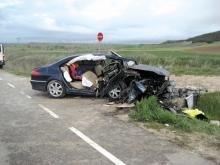At a time when road safety is posing a significant threat to both human health and economic development around the world, it is worth noting that in many developed nations the situation is improving. The United Nations has identified road safety as a major problem and established its Decade of Action for Road Safety for the 2010-2020 period, in a bid to cut the growing death toll.
But while developing nations are seeing a vast growth in vehicle numbers and road fatalities, the improving road safety situ

At a time when road safety is posing a significant threat to both human health and economic development around the world, it is worth noting that in many developed nations the situation is improving. The 3262 United Nations has identified road safety as a major problem and established its 3439 Decade of Action for Road Safety for the 2010-2020 period, in a bid to cut the growing death toll.
But while developing nations are seeing a vast growth in vehicle numbers and road fatalities, the improving road safety situation in developed nations makes a notable contrast. The latest data from Europe shows a continued improvement in road safety, with a reduction in fatalities during 2012 compared with 2011. Official information shows that there were 2,661 fewer road deaths in the3287 EU during 2012 than in 2011. The EC has a policy of halving road fatality levels between 2010 and 2020 and the figures suggest that this plan is broadly on track.
In the 2010-2012 period, EU nations reduced road deaths by 11%. This came close to the EU target. And according to the1197 European Transport Safety Council (ETSC), 27 of the 31 countries monitored have reduced the number of road deaths in 2012 compared with 2011. Several countries look set to halve road deaths between 2010 and 2020. Malta, Denmark, Norway and Spain have had particular success. Final figures from the German Federal Statistics Office, 5143 Destatis, reveal some 3,600 people died on Germany’s roads in 2012, a 10.2% drop from the previous year. Meanwhile for the first six months of 2013, some 227 people were killed in vehicle crashes in Portugal, a drop of 18% compared with the previous year. But of note is the fact that while males make up just 49% of the EU population, they account for 76% of road deaths, with three times the fatality rate of females on EU roads.
Cause for concern comes from the US where the National Highway Transportation Safety Agency (NHTSA) revealed an increase in road fatalities during 2012. The NHTSA’s statistical projection of traffic fatalities suggests that 34,080 people died in vehicle traffic crashes in 2012, an increase of about 5.3% over the 32,367 killed in 2011. This is equivalent to an average of around 93 people being killed on US roads every day. It is worth noting though that 2011 had the lowest level of fatalities on US roads for 60 years, no mean achievement given the massive increase in population, vehicle numbers and distances driven. Traffic fatalities in the US have been steadily declining over the previous six years since reaching a near-term peak in 2005, falling some 26% between 2005 and 2011.
Clearly road safety policies being implemented in developed nations are showing benefits. Tougher enforcement of laws governing seat belt use, speeding and driving under the influence all have significant effect. But just how police forces in developing nations can follow suit remains to be seen.
But while developing nations are seeing a vast growth in vehicle numbers and road fatalities, the improving road safety situation in developed nations makes a notable contrast. The latest data from Europe shows a continued improvement in road safety, with a reduction in fatalities during 2012 compared with 2011. Official information shows that there were 2,661 fewer road deaths in the
In the 2010-2012 period, EU nations reduced road deaths by 11%. This came close to the EU target. And according to the
Cause for concern comes from the US where the National Highway Transportation Safety Agency (NHTSA) revealed an increase in road fatalities during 2012. The NHTSA’s statistical projection of traffic fatalities suggests that 34,080 people died in vehicle traffic crashes in 2012, an increase of about 5.3% over the 32,367 killed in 2011. This is equivalent to an average of around 93 people being killed on US roads every day. It is worth noting though that 2011 had the lowest level of fatalities on US roads for 60 years, no mean achievement given the massive increase in population, vehicle numbers and distances driven. Traffic fatalities in the US have been steadily declining over the previous six years since reaching a near-term peak in 2005, falling some 26% between 2005 and 2011.
Clearly road safety policies being implemented in developed nations are showing benefits. Tougher enforcement of laws governing seat belt use, speeding and driving under the influence all have significant effect. But just how police forces in developing nations can follow suit remains to be seen.





